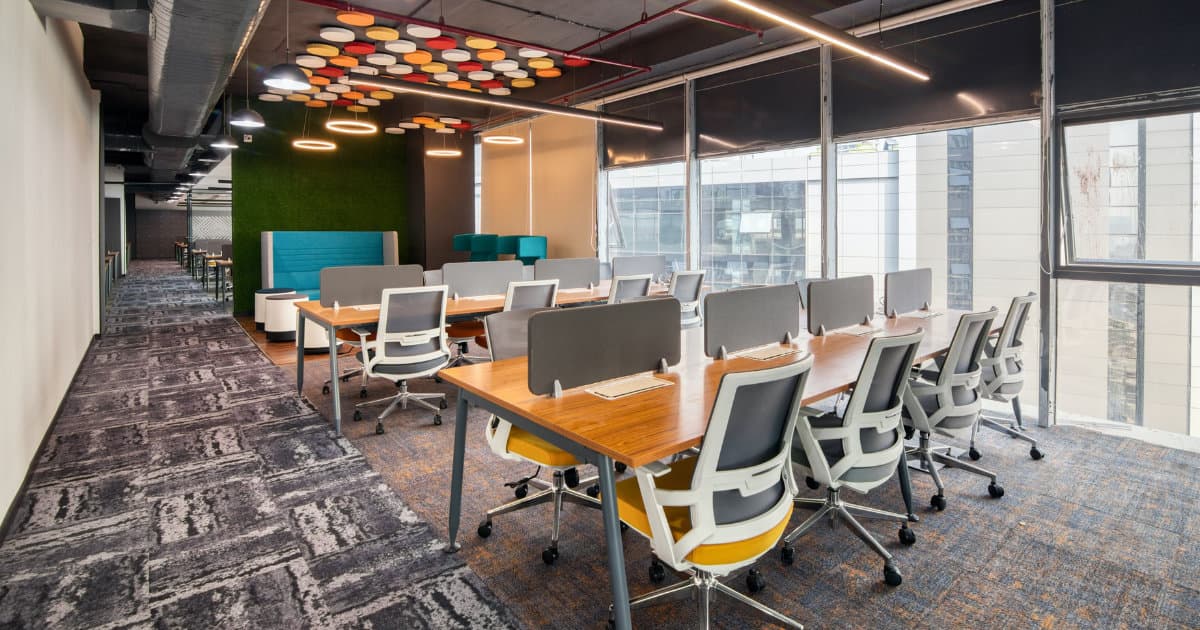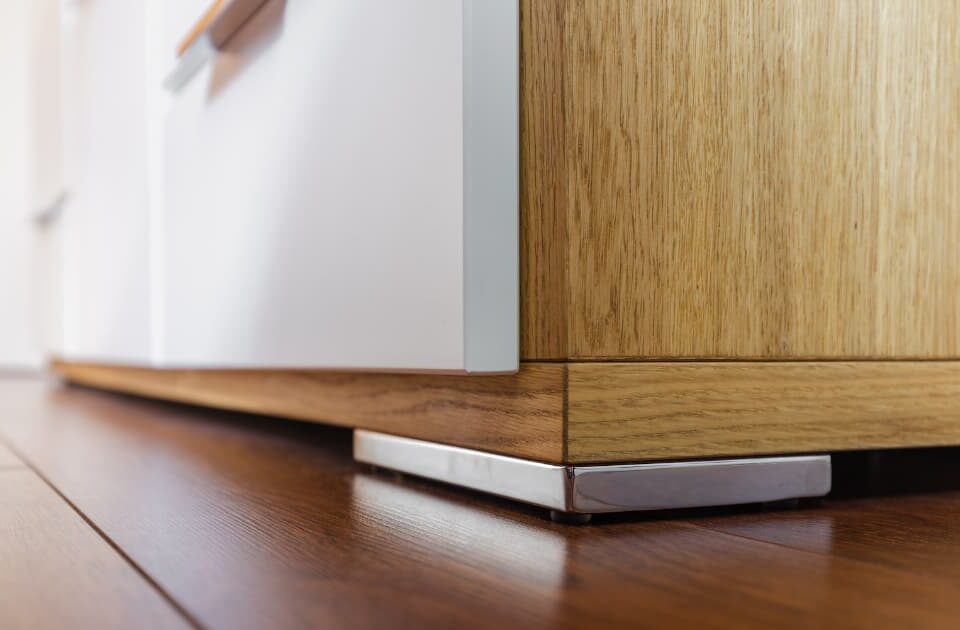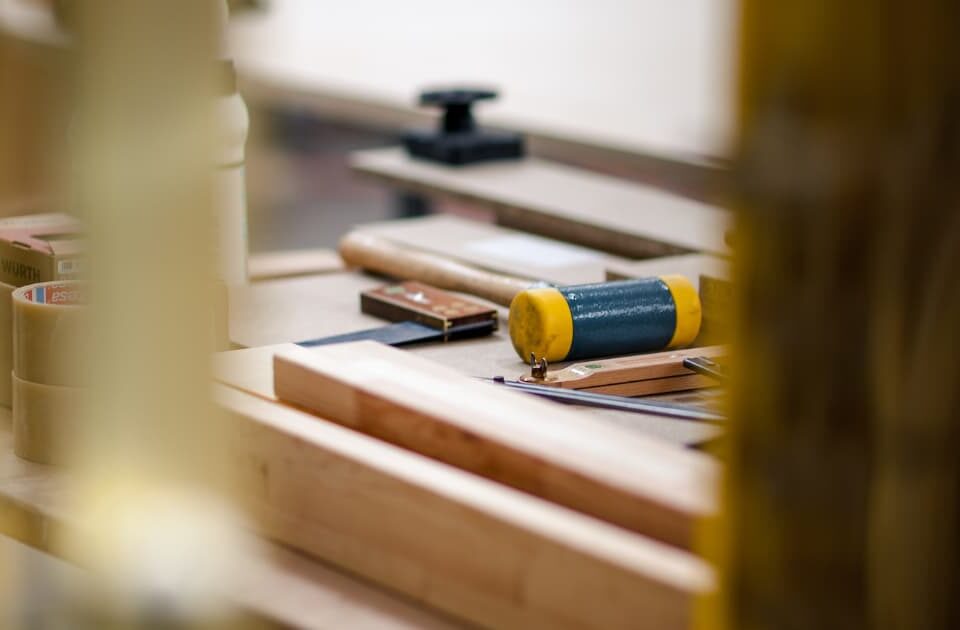Office Interiors: How to Reduce Noise Levels

Different Types of Commercial Interior Design
23rd February 2022
Pros and Cons of an Open Plan Office
23rd March 2022If you found yourself getting used to working alone during the pandemic, then you’re not alone. While returning to the office has it perks, from socialisation to creating a more cohesive workplace environment, there are some elements which are more challenging to embrace once again – such as the noise of a collaborative office.
From tea breaks to meetings, desk-side chats and the constant clicking of others’ keyboards, cutting through the noise and being able to concentrate can be difficult. That’s why we’ve created this to reducing noise levels with the help of effective office interior design.
Separate the office into different zones
Considering the layout of the office will usually be the first port of call when it comes to trying to manage noise levels. This may seem like a really obvious one but separating the office into quiet working spaces and breakout zones is not only better for concentration but helps employees nurture that work-life balance which stops them from eating at their desk and spending the entire day immersed in work.
When you give employees a space to relax away from their desk, you allow them to build better habits – and you keep the actual working office a quieter and more focussed environment. After all, nobody wants to hear you on your phone, discussing your after-work plans, or eating a bag of crisps while they’re trying to plan their next meeting.
Use sound absorbing materials
Have you ever noticed how even the most stylish and minimalist of glass-filled offices will have curtains hanging across the glass screens of some meeting rooms? This isn’t just to stop the whole office from watching colleagues receive a telling off or going through an official presentation – it is also a great solution for soundproofing a meeting space.
This is because fabrics help to absorb sound, ensuring that what’s going on inside the meeting room remains private, and ensuring that the noise from the meeting doesn’t disturb those trying to concentrate on work outside.
Other soundproofing solutions that can be added to offices include:
- Soundproofing doors
- Carpets to soak up the sound of movement
- Adding soft furnishings to spaces which soak up excess sound
- Acoustic glass rather than regular glass for panelling and windows
Create soundproofed work pods
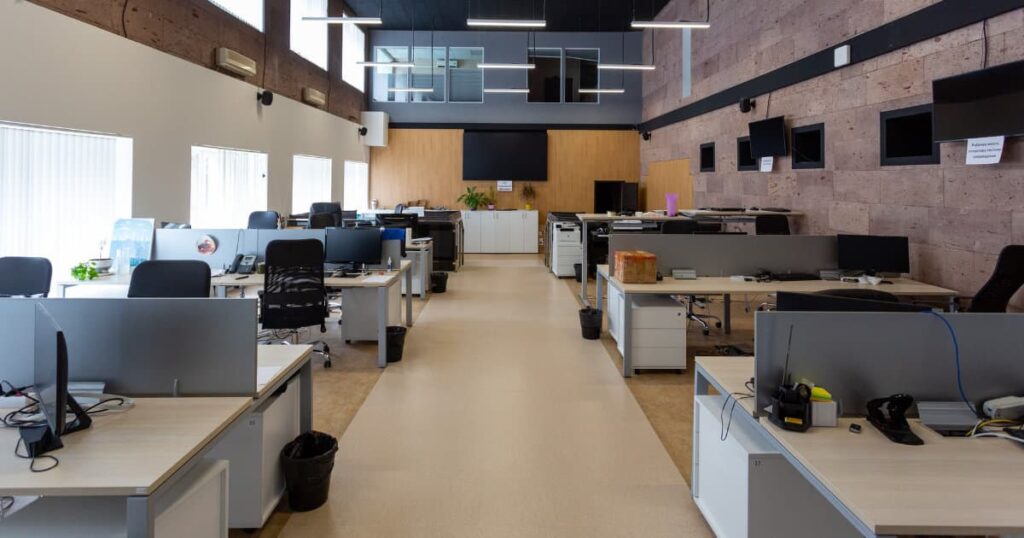
No, we don’t mean putting each of your workers or colleagues in their own little self-contained office. What this actually means is using soundproofing boards which sit at head height on each desk, creating a barrier between each worker while not only gives each privacy but also doubles as a memo board and adds an element of soundproofing to their workspace.
Hybrid working
What better way to reduce noise levels in the office than by nurturing work habits which see some employees in the office while others are at home, and vice versa? When your workplace enables a hybrid working policy, you will minimise the numbers of workers who are in the office at any one time.
Isolate noisy equipment
Office noise doesn’t just come from overly chatty colleagues and loud mouthed bosses – it can also come from equipment, such as printers and shredders which can all start to feel unbearably noisy after hours of work.
By isolating these pieces of equipment and putting them in a specific location or even a separate room of the office, you minimise the disruption that they cause – both when they’re working and when they’re broken and needing to be fixed.
Embrace office plants
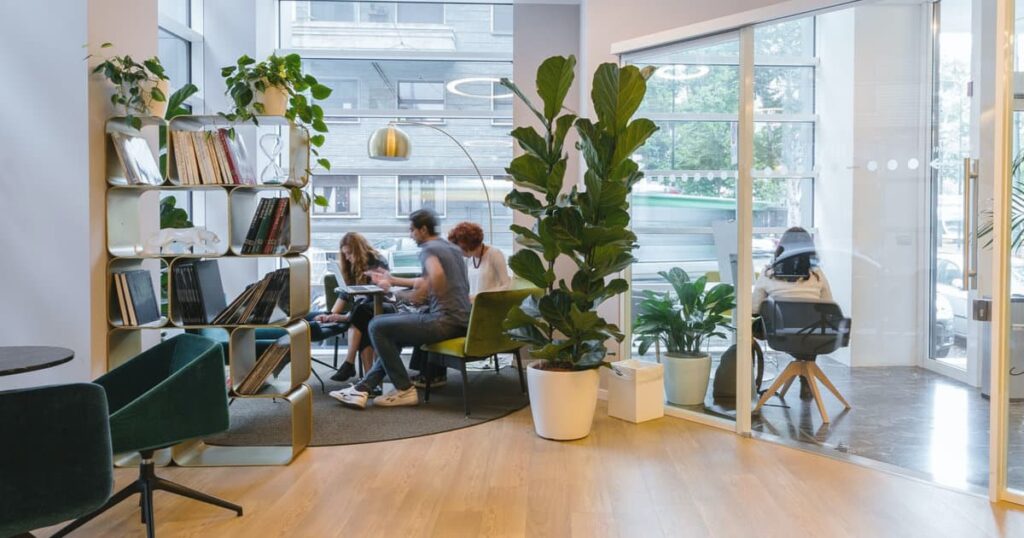
Did you know that office plants aren’t just great for wellbeing and creating a harmonious and attractive office space – they are also great at reducing noise levels in an open plan office?! The larger the plant, the bigger the impact it has in terms of soaking up and minimising the movement of sound – with live garden walls a growing concept in terms of popularity and success rates.
The importance of balance
Finally, while all of these elements help to reduce the noise levels in your office space, it is important to recognise the importance of balance – minimising disruption while still allowing your workplace or office to feel like an open and friendly space. Rather than making colleagues and/or employees feel like they have to be quiet all day unless in the dedicated breakout zone, nurture them into good habits which separate breaktime and quiet work time – and create collaborative workspaces and quiet corners.
For more insight into how best to design and build your perfect office, get in touch with our team.

